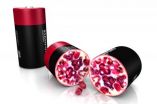(Press-News.org) CORVALLIS, Ore. – A new study suggests that the magma sitting 4-5 kilometers beneath the surface of Oregon's Mount Hood has been stored in near-solid conditions for thousands of years, but that the time it takes to liquefy and potentially erupt is surprisingly short – perhaps as little as a couple of months.
The key, scientists say, is to elevate the temperature of the rock to more than 750 degrees Celsius, which can happen when hot magma from deep within the Earth's crust rises to the surface. It is the mixing of the two types of magma that triggered Mount Hood's last two eruptions – about 220 and 1,500 years ago, said Adam Kent, an Oregon State University geologist and co-author of the study.
Results of the research, which was funded by the National Science Foundation, were published this week in the journal Nature.
"If the temperature of the rock is too cold, the magma is like peanut butter in a refrigerator," Kent said. "It just isn't very mobile. For Mount Hood, the threshold seems to be about 750 degrees (C) – if it warms up just 50 to 75 degrees above that, it greatly increases the viscosity of the magma and makes it easier to mobilize."
Thus the scientists are interested in the temperature at which magma resides in the crust, they say, since it is likely to have important influence over the timing and types of eruptions that could occur. The hotter magma from down deep warms the cooler magma stored at 4-5 kilometers, making it possible for both magmas to mix and to be transported to the surface to eventually produce an eruption.
The good news, Kent said, is that Mount Hood's eruptions are not particularly violent. Instead of exploding, the magma tends to ooze out the top of the peak. A previous study by Kent and OSU postdoctoral researcher Alison Koleszar found that the mixing of the two magma sources – which have different compositions – is both a trigger to an eruption and a constraining factor on how violent it can be.
"What happens when they mix is what happens when you squeeze a tube of toothpaste in the middle," said Kent, a professor in OSU's College of Earth, Ocean, and Atmospheric Sciences. "A big glob kind of plops out the top, but in the case of Mount Hood – it doesn't blow the mountain to pieces."
The collaborative study between Oregon State and the University of California, Davis is important because little was known about the physical conditions of magma storage and what it takes to mobilize the magma. Kent and UC-Davis colleague Kari Cooper, also a co-author on the Nature article, set out to find if they could determine how long Mount Hood's magma chamber has been there, and in what condition.
When Mount Hood's magma first rose up through the crust into its present-day chamber, it cooled and formed crystals. The researchers were able to document the age of the crystals by the rate of decay of naturally occurring radioactive elements. However, the growth of the crystals is also dictated by temperature – if the rock is too cold, they don't grow as fast.
Thus the combination of the crystals' age and apparent growth rate provides a geologic fingerprint for determining the approximate threshold for making the near-solid rock viscous enough to cause an eruption. The diffusion rate of the element strontium, which is also sensitive to temperature, helped validate the findings.
"What we found was that the magma has been stored beneath Mount Hood for at least 20,000 years – and probably more like 100,000 years," Kent said. "And during the time it's been there, it's been in cold storage – like the peanut butter in the fridge – a minimum of 88 percent of the time, and likely more than 99 percent of the time."
In other words – even though hot magma from below can quickly mobilize the magma chamber at 4-5 kilometers below the surface, most of the time magma is held under conditions that make it difficult for it to erupt.
"What is encouraging from another standpoint is that modern technology should be able to detect when magma is beginning to liquefy, or mobilize," Kent said, "and that may give us warning of a potential eruption. Monitoring gases, utilizing seismic waves and studying ground deformation through GPS are a few of the techniques that could tell us that things are warming."
The researchers hope to apply these techniques to other, larger volcanoes to see if they can determine their potential for shifting from cold storage to potential eruption, a development that might bring scientists a step closer to being able to forecast volcanic activity.
INFORMATION:
Note to Editors: Photos of Mount Hood are available to illustrate this article at the links below:
Mount Hood: http://www.flickr.com/photos/oregonstateuniversity/12223719805/
Closeup of Mount Hood: http://www.flickr.com/photos/33247428@N08/6843582939/in/photolist-bqK9Mi
OSU researchers examine rock on Mount Hood: http://www.flickr.com/photos/oregonstateuniversity/12224340196/in/photostream/
Adam Kent measures mineral concentrations: http://www.flickr.com/photos/oregonstateuniversity/12224218884/
Volcanoes, including Mt. Hood, can go from dormant to active quickly
2014-02-17
ELSE PRESS RELEASES FROM THIS DATE:
River samples shed light on the spread of potential 'superbugs'
2014-02-17
The spread of antibiotic-resistance to one of the most pristine locations in Asia is linked to the annual human pilgrimages to the region, new research has shown.
Experts from Newcastle University, UK, and the Indian Institute of Technology in Delhi (IIT-Delhi), sampled water and sediments at seven sites along the Upper Ganges River, in the foothills of the Himalayas.
They found that in May and June, when hundreds of thousands of visitors travel to Rishikesh and Haridwar to visit sacred sites, levels of resistance genes that lead to "superbugs" were found to be about ...
New blood cells fight brain inflammation
2014-02-17
Hyperactivity of our immune system can cause a state of chronic inflammation. If chronic, the inflammation will affect our body and result in disease. In the devastating disease multiple sclerosis, hyperactivity of immune cells called T-cells induce chronic inflammation and degeneration of the brain. Researchers at BRIC, the University of Copenhagen, have identified a new type of regulatory blood cells that can combat such hyperactive T-cells in blood from patients with multiple sclerosis. By stimulating the regulatory blood cells, the researchers significantly decreased ...
Iowa State University's Wintersteen talks partnerships at national science meeting
2014-02-17
AMES, Iowa – Wendy Wintersteen, dean of Iowa State University's College of Agriculture and Life Sciences, spoke on Sunday of the importance of public-private partnerships in strengthening global food security during the annual meeting of the American Association for the Advancement of Science in Chicago.
During her talk, part of a panel on research and development for sustainable agriculture and food security, Wintersteen stressed the importance of partnerships in providing the innovation necessary to meet global challenges.
She said climate change, pests, plant ...
Scientists call for new stewardship of the deep ocean: Earth's last frontier
2014-02-17
The deep ocean, the largest domain for life on earth, is also its least explored environment. Humans are now encroaching more vigorously than ever into the ocean's deep regions, exploiting the deep's resources and placing its wealth of vibrant habitats and natural services for the planet at risk.
Lisa Levin, a biological oceanographer at Scripps Institution of Oceanography at UC San Diego, believes the vital functions provided by the deep sea—from carbon sequestration to nurturing fish stocks—are key to the health of the planet. As humans ramp up exploitation of deep-sea ...
Researchers rejuvenate stem cell population from elderly mice, enabling muscle recovery
2014-02-17
STANFORD, Calif. — Researchers at the Stanford University School of Medicine have pinpointed why normal aging is accompanied by a diminished ability to regain strength and mobility after muscle injury: Over time, stem cells within muscle tissues dedicated to repairing damage become less able to generate new muscle fibers and struggle to self-renew.
"In the past, it's been thought that muscle stem cells themselves don't change with age, and that any loss of function is primarily due to external factors in the cells' environment," said Helen Blau, PhD, the Donald and Delia ...
New 'pomegranate-inspired' design solves problems for lithium-ion batteries
2014-02-17
An electrode designed like a pomegranate – with silicon nanoparticles clustered like seeds in a tough carbon rind – overcomes several remaining obstacles to using silicon for a new generation of lithium-ion batteries, say its inventors at Stanford University and the Department of Energy's SLAC National Accelerator Laboratory.
"While a couple of challenges remain, this design brings us closer to using silicon anodes in smaller, lighter and more powerful batteries for products like cell phones, tablets and electric cars," said Yi Cui, an associate professor at Stanford ...
Worldwide study finds that fertilizer destabilizes grasslands
2014-02-17
Lincoln, Neb., Feb. 17, 2014 -- Fertilizer could be too much of a good thing for the world's grasslands, according to study findings to be published online Feb. 16 by the journal Nature.
The worldwide study shows that, on average, additional nitrogen will increase the amount of grass that can be grown. But a smaller number of species thrive, crowding out others that are better adapted to survive in harsher times. It results in wilder swings in the amount of available forage.
"More nitrogen means more production, but it's less stable," said Johannes M.H. Knops, a University ...
Study on flu evolution may change textbooks, history books
2014-02-17
A new study reconstructing the evolutionary tree of flu viruses challenges conventional wisdom and solves some of the mysteries surrounding flu outbreaks of historical significance.
The study, published in the journal Nature, provides the most comprehensive analysis to date of the evolutionary relationships of influenza virus across different host species over time. In addition to dissecting how the virus evolves at different rates in different host species, the study challenges several tenets of conventional wisdom, for example the notion that the virus moves largely ...
CU-Boulder stem cell research may point to new ways of mitigating muscle loss
2014-02-17
New findings on why skeletal muscle stem cells stop dividing and renewing muscle mass during aging points up a unique therapeutic opportunity for managing muscle-wasting conditions in humans, says a new University of Colorado Boulder study.
According to CU-Boulder Professor Bradley Olwin, the loss of skeletal muscle mass and function as we age can lead to sarcopenia, a debilitating muscle-wasting condition that generally hits the elderly hardest. The new study indicates that altering two particular cell-signaling pathways independently in aged mice enhances muscle stem ...
Years after bullying, negative impact on a child's health may remain
2014-02-17
BOSTON (Feb. 17, 2014) —The longer the period of time a child is bullied, the more severe and lasting the impact on a child's health, according to a new study from Boston Children's Hospital published online Feb. 17 in Pediatrics. The study is the first to examine the compounding effects of bullying from elementary school to high school.
"Our research shows that long-term bullying has a severe impact on a child's overall health, and that its negative effects can accumulate and get worse with time," says the study's first author Laura Bogart, PhD, from Boston Children's ...




